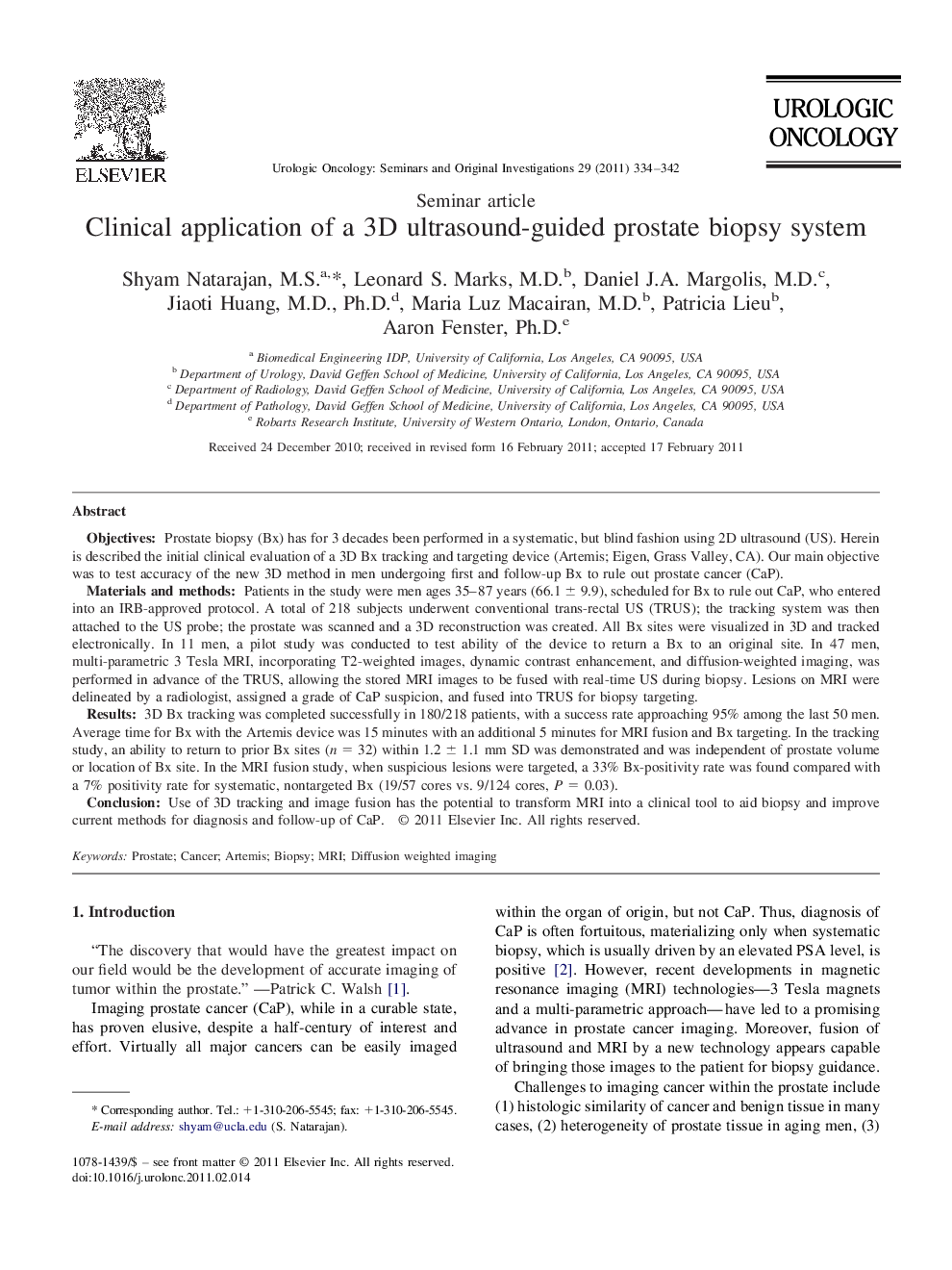| Article ID | Journal | Published Year | Pages | File Type |
|---|---|---|---|---|
| 4000620 | Urologic Oncology: Seminars and Original Investigations | 2011 | 9 Pages |
ObjectivesProstate biopsy (Bx) has for 3 decades been performed in a systematic, but blind fashion using 2D ultrasound (US). Herein is described the initial clinical evaluation of a 3D Bx tracking and targeting device (Artemis; Eigen, Grass Valley, CA). Our main objective was to test accuracy of the new 3D method in men undergoing first and follow-up Bx to rule out prostate cancer (CaP).Materials and methodsPatients in the study were men ages 35–87 years (66.1 ± 9.9), scheduled for Bx to rule out CaP, who entered into an IRB-approved protocol. A total of 218 subjects underwent conventional trans-rectal US (TRUS); the tracking system was then attached to the US probe; the prostate was scanned and a 3D reconstruction was created. All Bx sites were visualized in 3D and tracked electronically. In 11 men, a pilot study was conducted to test ability of the device to return a Bx to an original site. In 47 men, multi-parametric 3 Tesla MRI, incorporating T2-weighted images, dynamic contrast enhancement, and diffusion-weighted imaging, was performed in advance of the TRUS, allowing the stored MRI images to be fused with real-time US during biopsy. Lesions on MRI were delineated by a radiologist, assigned a grade of CaP suspicion, and fused into TRUS for biopsy targeting.Results3D Bx tracking was completed successfully in 180/218 patients, with a success rate approaching 95% among the last 50 men. Average time for Bx with the Artemis device was 15 minutes with an additional 5 minutes for MRI fusion and Bx targeting. In the tracking study, an ability to return to prior Bx sites (n = 32) within 1.2 ± 1.1 mm SD was demonstrated and was independent of prostate volume or location of Bx site. In the MRI fusion study, when suspicious lesions were targeted, a 33% Bx-positivity rate was found compared with a 7% positivity rate for systematic, nontargeted Bx (19/57 cores vs. 9/124 cores, P = 0.03).ConclusionUse of 3D tracking and image fusion has the potential to transform MRI into a clinical tool to aid biopsy and improve current methods for diagnosis and follow-up of CaP.
